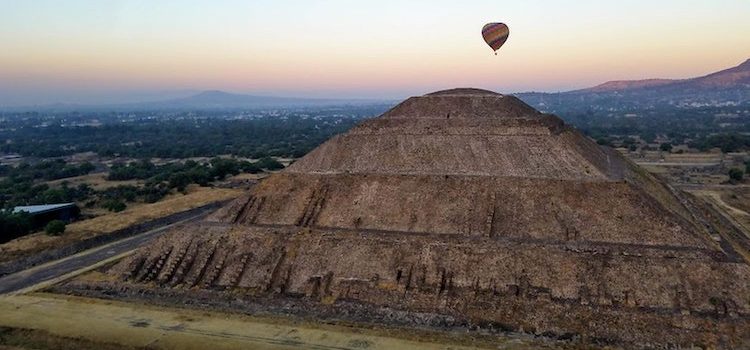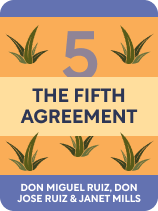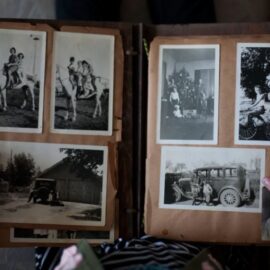

This article is an excerpt from the Shortform book guide to "The Fifth Agreement" by Don Miguel Ruiz. Shortform has the world's best summaries and analyses of books you should be reading.
Like this article? Sign up for a free trial here .
What does Toltec philosophy say about reality? What is its view of enlightenment?
Toltec philosophy asserts that we tend to carry false beliefs. When we challenge those beliefs and overcome them, we become more and more free. Authors don Miguel Ruiz and don Jose Ruiz (the naguals) discuss three stages that we go through on the road to total personal freedom (enlightenment).
Continue reading to learn the Toltec philosophy of enlightenment.
Enlightenment in Toltec Philosophy
The naguals describe three subjective “realities” we can inhabit. Each subjective reality is a stage in the Toltec road to total personal freedom, culminating in the ability to choose what we believe and thereby determine our own satisfaction and happiness. Essentially, that final stage is a form of enlightenment.
In short, Toltec philosophy contends that our perception of reality—and therefore the way we think, feel, and behave—changes based on what we believe. As we begin to challenge and overcome the false “truths” we accepted as children, we grow progressively freer.
The following are the three stages we’ll explore:
- Stage 1: The Mirage of “The Real World,” in which we take what we see at face value
- Stage 2: The Seed of Doubt, during which we challenge our perceptions and beliefs
- Stage 3: The Freedom of Control, in which we grow beyond what our society teaches
1. The Mirage of “The Real World”
Most of us, the naguals say, aren’t critical of what we perceive and learn. We trust what our culture, society, and teachers tell us, innocently and without reservation. We believe that what we’re seeing is all there is—we think we live in “the real world” and never realize that it’s only a mirage. This is the most common way to live, the naguals say. We’re handed a flawed belief system, and we accept it as-is.
(Shortform note: The authors suggest that this blind acceptance is almost universal. In A New Earth, spiritualist Eckhart Tolle agrees that, historically, only exceptional religious figures (such as the Buddha, Lao Tzu, and Jesus Christ) have learned to see past the mirage. However, Tolle also suggests that it’s becoming more and more common for people to see the flaws in our societal belief systems—potentially leading to what Tolle calls a “transformation of human consciousness.”)
Living in the mirage is torture, Toltec philosophy says, because our belief in its reality leaves us no escape—we take the picture we’re handed of what the “correct” way to live is and hold ourselves to it. We copy the behaviors, beliefs, and emotions we believe to be “right,” burying our true selves under so many layers of conformity that we forget who we are or what we want. Furthermore, we live in fear that others will see us living “incorrectly” and punish us for it—and we validate that fear by attacking those around us who misbehave.
(Shortform note: Eckhart Tolle argues that the mirage doesn’t just harm us as individuals: It’s also actively destroying our social and physical environments. The values we’re taught to hold, he argues, are insane to the point of self-destruction: Society’s obsession with productivity and profit leads us to abuse and slaughter our own people and jeopardize the livability of our planet. If we want to survive, he says, we must collectively evolve beyond the materialistic values that are driving us apart. Instead, we must put people first.)
2. The Seed of Doubt
To reclaim our freedom, Toltec philosophy says, we must replace judgment with acceptance. In other words, we must stop demanding everyone be “better” and just love them as they are. To love ourselves as we are, and experience the world as it is. In short, the second stage of Toltec enlightenment involves learning to accept what’s already here instead of focusing on how flawed it all is.
During the second stage, the naguals explain, we become aware of the ways our beliefs harm us and begin to disconnect from the mirage. We begin to doubt that the mirage is truly “the real world,” and awaken to the many small ways in which the beliefs we grew up with manifest as harm. We make adjustments to the way we respond to, think about, and see ourselves, others, and the world. We start to see what’s actually here, instead of what’s not here.
Shortform Commentary: What Does Acceptance Mean?
Other philosophies drive at this core principle—accepting things as they are—from different directions, but come to remarkably similar conclusions. For example, the Tao Te Ching is very direct. It tells us that the workings of the universe aren’t truly comprehensible or explainable and that we don’t have to know, label, or understand anything in order to experience it—or even to enjoy it. In fact, it’s often best not to stress about the whys and hows because what’s happening will happen anyway. What is, is, and that’s okay.
Like Toltec philosophy, other philosophies also recommend showing yourself this same acceptance. For example, the Bhagavad Gita suggests that in order to find ourselves, we must discard every outside influence: Our search for peace and righteousness, our selfish desires, and our indulgence in sloth and despair. It’s the false “reality” created by our senses that gives rise to those things, not the true self at our core. To be yourself, discard everything you think you’re supposed to be and just focus on being what you already are.
3. The Freedom of Control
The final stage in the Toltec path is a form of what’s often called “enlightenment.” Let’s take a look at what enlightenment looks like in Toltec philosophy:
The naguals say that the best stage of your life begins as soon as you completely stop judging. When you can allow yourself and others to simply exist, you lose the need to find yourself, to try to be someone else, or to “fix” yourself. Your personal story no longer describes a struggle against yourself, others, or the world—instead, it becomes a record of your existence, of the message you carry from the universe, to the universe. In short, because you’re no longer actively making yourself unhappy, you regain the childish freedom of being what you are without burden, expectation, or demand.
(Shortform note: Like the Ruizes, the Tao Te Ching says enlightenment is about living in the here and now, following the natural pull of your moment-to-moment experience. It’s about being at peace with the reality you live in—without expectations, self-consciousness, or attempts to control the actions of others. Similarly, the Bhagavad Gita explains that an enlightened person is content to exist in every moment, believing that their purpose is simply to be a part of this world. In short, there aren’t any rules; you’re free to simply experience the moments you get to experience.)

———End of Preview———
Like what you just read? Read the rest of the world's best book summary and analysis of Don Miguel Ruiz's "The Fifth Agreement" at Shortform .
Here's what you'll find in our full The Fifth Agreement summary :
- The five “agreements” to make with yourself that adjust your outlook
- How to rediscover your true self and recapture the freedom you felt as a child
- A five-step process to escape the mirage of “the real world”






